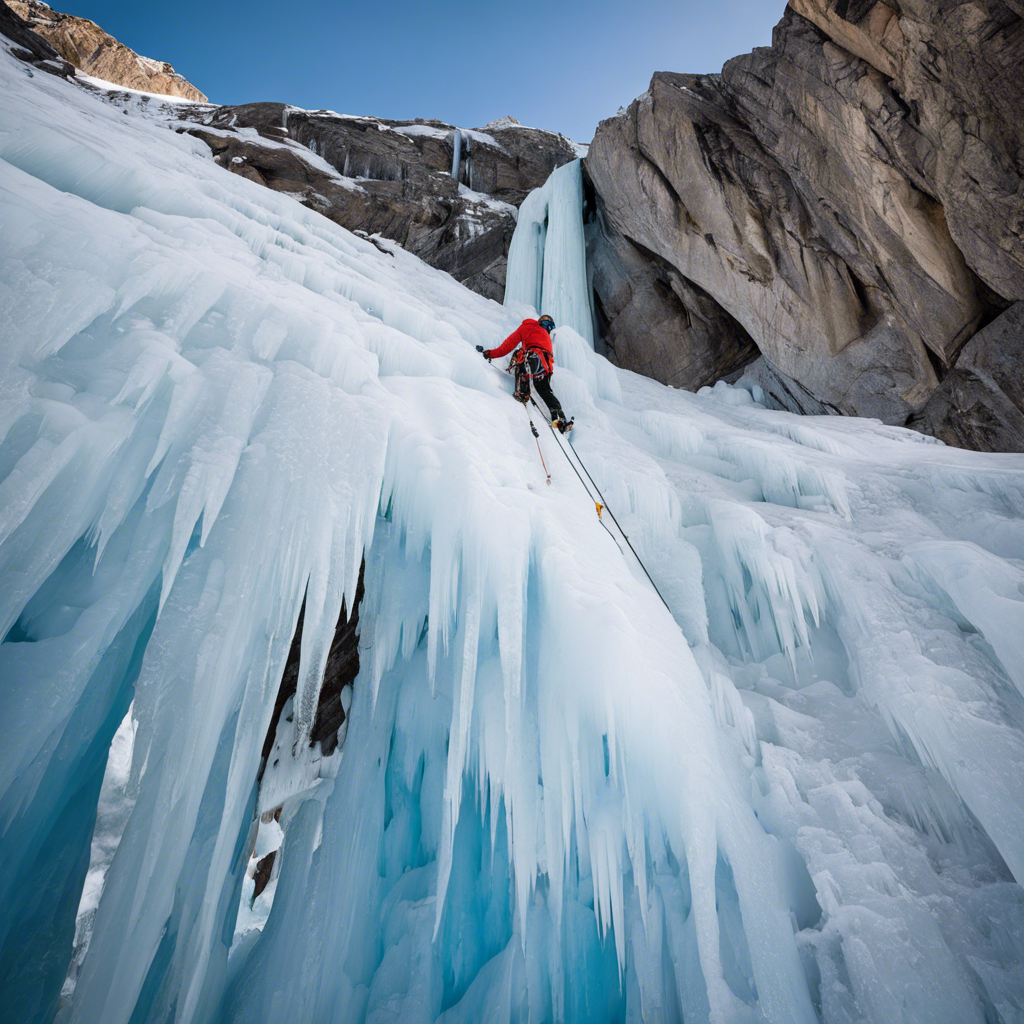The fundamental skill in ice climbing is utilizing your tools effectively. Learning the proper technique to swing and place your ice tools is crucial. A precise swing, with the right amount of force and accuracy, ensures a secure placement in the ice. It is an art that requires practice to develop a feel for the necessary force and to avoid over-swinging, which can result in a misplaced tool or a broken pick. A common technique taught to beginners is the ‘flick of the wrist’ movement, which helps drive the tool into the ice effectively.
Footwork is another critical aspect of ice climbing. Unlike rock climbing, where you can use footholds, ice climbing often involves kicking your crampons into the ice to create secure footholds. This requires a specific kicking technique and the ability to assess the ice conditions to determine the best placement for your feet. Proper footwork ensures stability and balance, conserving energy and allowing for more efficient climbing.
Balance is a key factor in ice climbing, and a skill that distinguishes the experienced climber. Maintaining a stable center of gravity while ascending the ice demands a conscious awareness of body positioning. Keeping your body centered between your tools and your feet firmly planted requires practice, and it is this balance that ensures an efficient and graceful ascent. Shifting your weight effectively conserves energy and helps you navigate the ice with precision.
Another essential technique is understanding how to read and navigate the ice. Ice climbing involves ascending frozen waterfalls, cliffs, and other ice formations, and no two climbs are ever the same. Reading the ice and identifying the best route requires an understanding of ice conditions, including transparency, texture, and thickness. An experienced ice climber can identify safe and unsafe ice, choosing the most efficient path to ascend.
Belaying, the technique of managing the climbing rope to protect the climber, is a critical skill in ice climbing. The belayer must effectively manage the rope, providing security and support to the climber above. Various belaying techniques are employed, depending on the climb and the number of climbers. A solid understanding of these techniques ensures the safety of the climber and the entire climbing team.
Descending the ice is a unique skill in itself. Rappelling requires the climber to control their descent using the rope and a specific set of techniques. Efficient rappelling ensures a smooth and safe return to the ground, or it can be used to move from one section of a climb to another. It is a skill that requires practice and an understanding of the various techniques and safety protocols involved.
Ice screw placement is a critical safety skill. Ice screws are temporary anchors placed in the ice to protect the climber in case of a fall. Proper placement and equalization of loads are essential techniques to master, as they ensure the safety and security of the climbing team. Learning the best practices for ice screw placement can be the difference between life and death in extreme climbing situations.
Finally, ice climbing, like any sport, demands physical fitness and mental toughness. It is a full-body workout that requires strength, endurance, and agility. Building physical and mental resilience is essential for climbers to push through challenging climbs and endure the demanding conditions they often face. A fit climber is more likely to make sound decisions and exhibit the agility and strength needed to navigate the frozen landscape.
